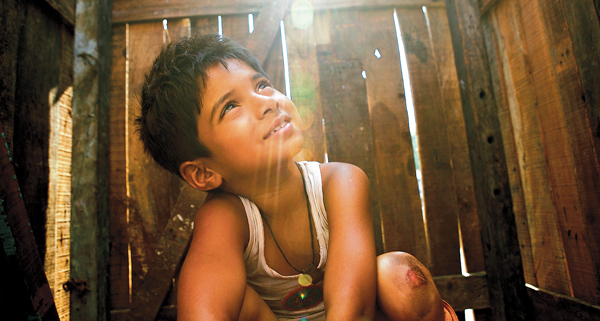When producer Christian Colson accepted the Best Picture Oscar for Slumdog Millionaire he said they had a script that inspired mad love in everyone and it is perhaps this wave of mad love that has carried Slumdog Millionaire from a struggling unanticipated British/Indian collaborative effort to arguably the biggest film of the last year.
It was a story maybe not quite as unlikely as the tale of the film where an Indian teenager from the slums wins ‘Who Wants to be a Millionaire?’ but the huge rise and momentum Danny Boyle’s movie has created were not expected by anyone when the film premiered last Autumn.
Nonetheless, it is fully deserved with Boyle confirming his huge talent in directing a diverse range of films from zombie infected
The film follows Jamal, played by TV sensation Skins’ Dev Patel, and his brother Salim (Anil Kapoor) as they try to break free from the slums of
The child performers are superb, perhaps at least due in part to the fact that some of them are children of the slums, but the younger trio through themselves into the role with enthusiasm, mischief and humour which is another tribute to Danny Boyle’s masterly direction. The young teenager actors that then depict the middle section of the story are also excellent but Boyle never lets the audience escape from the danger the children are always in with the struggles of slum life and the unsympathetic characters they meet on the way.
Jamal’s story is told through each of the questions he is asked in the show with the answers known by him not through education and reading but by a coincidence that each question relates to a life experience he’s had where he’s come across the answers such as being threatened by a type of gun, seeing children dressed as Indian gods or catching televised cricket while working as a servant.
This sounds very contrived and of course in a sense it is. But the magic the film creates and the Bollywood-ised nature of it mean the unrealism of the plot is not really a major problem and perhaps to the contrary helps to make the film the spellbinding spectacle that it is. Jamal’s quest to find Lathika who is separated from as a child fuels the story creating the mad love which has captured audience’s in a very un-Hollywood way of captivating audiences.
The mix of Boyle’s innovative and immersive film-making coupled with the beauties and warm heart of Bollywood make this a fantastic watch and a confirm the globalised nature of modern cinema.


No comments:
Post a Comment